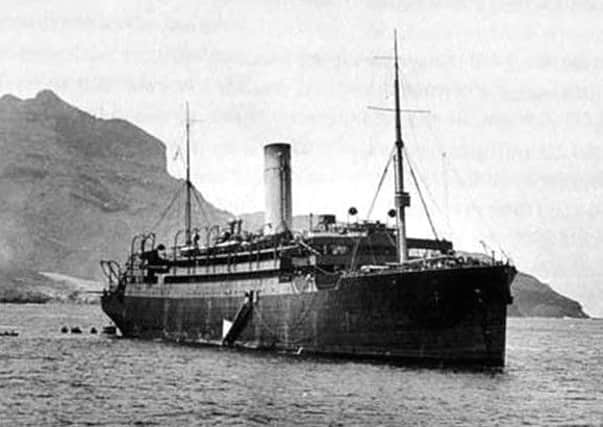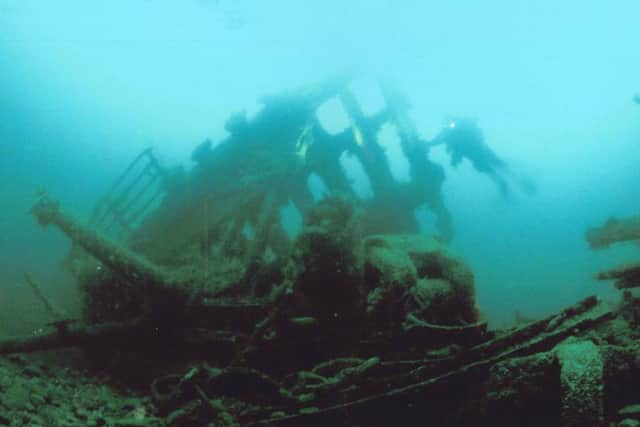Tragic fate of gold-laden SS Laurentic recalled century after sinking


A particularly horrendous First World War tragedy, the sinking of the SS Laurentic cost 354 lives and resulted in the loss of 3,200 gold bars – some of which are thought to remain at the bottom of the Lough Swilly in Co Donegal where the vessel sank.
The state-of-the-art ship was built at Harland and Wolff in Belfast in 1907 and was part of the same White Star Line that included other famous vessels such as the Titanic and Oceanic.
Advertisement
Hide AdAdvertisement
Hide AdA luxury ocean liner capable of crossing the Atlantic at record-breaking speeds, the Laurentic was commandeered by the Royal Navy after the outbreak of the First World War.


It saw a variety of uses – including the transportation of vast quantities of gold bullion. During a journey to ship 3,200 gold bars weighing some 43 tons to Canada to pay for munitions supplied in the war effort, the boat made an unscheduled stop in Co Donegal to allow passengers ill with yellow fever to disembark.
At the mouth of Lough Swilly, the Laurentic struck a mine left by a German submarine and sank, resulting in horrendous loss of life.
Despite a rescue operation launched from nearby Londonderry, the unusually cold temperatures of January 25, 1917 – 13 degrees below freezing – led to the deaths of 354 of those aboard the Laurentic. Just 121 survived.
Advertisement
Hide AdAdvertisement
Hide AdThose who did survive were taken to the Guildhall in Londonderry where they were treated to a large banquet before being given a shilling and a packet of cigarettes each.


As for the gold, the vast majority was recovered in successive diving operations but 22 gold ingots remain unaccounted for. They are thought to remain at the bottom of the Swilly.
The new exhibition at the Tower Museum opens on January 25, exactly 100 years after the sinking of the Laurentic.
Ronan McConnell, education officer at the museum, said: “The sinking of the Laurentic is a fascinating story – the loss of life, the rescue operation, the vessel itself and of course the gold.
Advertisement
Hide AdAdvertisement
Hide Ad“This was very tragic. The temperatures were so low that people froze to death in the lifeboats.


“It isn’t as well known on an international level as the sinking of the Titanic or the Lusitania but the story we have to tell here is a really fascinating one. With the Laurentic, the story continues to this day through the various recovery attempts made over the years. The ship itself is still a salvagable ship that is worth a lot of money even for the scrap that is in it.
“The likelihood is that there are still 22 gold bars down there. I don’t know the value but it is certainly quite a lot.
“The reason the exhibition is in Londonderry is because the current owner – a man named Ray Cossum who acquired the wreck in the 1960s – lives here and has kindly loaned us some of the artefacts. The survivors were also brought to the Guildhall in Londonderry so there is that connection here.
Advertisement
Hide AdAdvertisement
Hide Ad“We tell the story of the Laurentic right through from when it was built, to the sinking, to the rescue attempts, the recovery of the gold, the other salvage missions until today where it lies at the bottom of the sea. We have oral recordings of those who were on board, those who worked in the rescue operations and the diving operations. We also have some never seen before photographs.”
War grave commemorations will also take place on January 25 in Co Donegal.